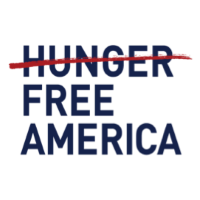
This is totally absurd. Only a distribution system constructed solely by selfish people could arrive at this.
Perhaps it is time to double tax all unsold food commodities. A little push added to market pull.
My central point for the deaf blind and stupid is that the USA is a massive food surplus centre and also a massively subsidized supplier as well suppressing farm prices worldwide. Yet we cannot assure food distribution to the least monetized ten percent of the population.
What about a hundred pound sack of potatoes to every household? wholesale price is still likely twenty bucks at best. Price promotion at the supermarket is just that and all middlemen try to max their gross.
It is no trick to push subsidized surpluses out into the communities for distribution.
New USDA Data: 38 Million Americans (9 Percent More than 2019) Suffered from Food Insecurity in 2020
First Complete Government Calculation of 2020 Hunger Surge
For Immediate Release: Contact: Nicole Aber
Wednesday, September 8, 2021 646-627-7741
12 Million U.S. Children Were Food Insecure, also a 9-Percent Increase
Spending on USDA Domestic Food Aid Reached Historic High in 2020
Advocates: “Boost in Federal Safety Net the Top Reason that Mass Food Hardships Didn’t Turn into Mass Starvation”
Safety Net Was a “Giant Food Life Preserver”
Thirty-eight million Americans struggled against hunger one or more times in 2020, a nine-percent increase over the 2019 level of 35 million, according to data released today by the U.S. Department of Agriculture (USDA).
This is the first complete federal data to formally document the full extent of hunger and food hardship, also known as “food insecurity,” during the first year of the pandemic. The number of U.S. children suffering from food insecurity also soared to 12 million in 2020, compared to 11 million in 2019, also a nine-percent increase.
Since the start of the pandemic in 2020, the federal government has also used a different methodology, the Household Pulse Survey, to study how many Americans don’t have enough food over seven-day periods of time. That methodology has proven that the number of Americans facing food hardship declined when the federal government increased food and cash assistance to struggling families by significant amounts at varied times in the last year and a half.
A different USDA report just found: “Spending on USDA’s domestic food and nutrition assistance programs in Fiscal Year 2020 reached a historical high of $122.1 billion.”
In response to these findings, Joel Berg, CEO of Hunger Free America, a nationwide direct service and advocacy organization, released the following statement:
“The new federal data tells us two things. First, while hunger was already a massive, systemic problem in all 50 states before COVID-19 hit the U.S., domestic hunger surged during the pandemic. Second, while tens of million of Americans suffered mightily from food hardship in 2020 – and are still suffering mightily – the nation avoided mass starvation mostly because the federal government stepped in to dramatically increase food and cash aid. This safety net was a giant food life preserver. Given that the pandemic is far from over, we need that aid to continue, as a down payment on the even bigger investments needed to create jobs, raise wages, and ensure an adequate safety net so we can finally end hunger in America once and for all.”
No comments:
Post a Comment